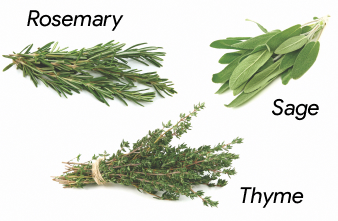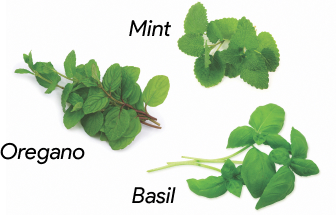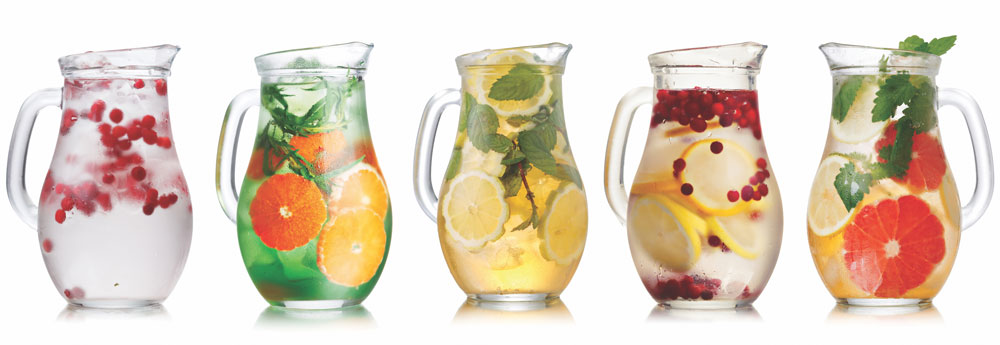How do you add flavor to food without adding too much fat?
Eating with familial chylomicronemia syndrome does not have to be bland and tasteless.
Spice up your menu starting today
Eating with FCS doesn’t need to be bland and tasteless. Use ‘flavor agents’ to spice things up. Flavor agents are wonderful ways to make a meal more enjoyable by building complex flavors to excite your mouth. Flavor agents include: herbs, spices, vinegars and other acidic flavors.
Add Herbs.
Herbs come from the leaves of plants. Delicate herbs that tear easily (mint, basil, dill, etc.) pair well with delicate vegetables that bruise easily (tomato, zucchini, eggplant, etc.). Hearty herbs that take more effort to break up (sage, rosemary, thyme, etc.) go better with hearty vegetables, like root vegetables (sweet potatoes, beets, carrots, etc.).
Examples:
Amp up the flavor of a tomato-based soup by tossing some fresh basil leaves on top before serving it.
Roast a variety of colored potatoes with chopped rosemary and thyme.
See how the cool of mint tastes when sprinkled on a mild chill pepper.

Hearty Herbs

Delicate Herbs
Add Spices.
Spices come from roots, barks, and seeds – basically anything that is not a leaf. Different cuisines from around the world often have a certain flavor profile due to what were once only locally-available spices.
By varying the spices you use, every night can be a trip to another part of the world. The right combination can unlock everything from Hungarian paprika dishes to Indian curries to Thai chili pastes – and everything in between.
Examples:
Season lentils and cauliflower with turmeric and fresh-cracked pepper.
Warm up your carrots with a dash of ground nutmeg and cinnamon.
Make your popcorn pop with garlic powder and cayenne.
Mastering herbs and spices is easy – and it makes mealtime something to enjoy. When thinking about adding spices to your food, think about the cuisines you like best. Spice up your menu during the week – think Taco Tuesday (Mexican spices), Greek Lemon Chicken Wednesday (skinless Greek lemon Kabobs with Greek seasoning, flaked onion, oregano, etc.), or Tandoori Chicken Thursday (coriander, cumin, turmeric and garam masala).

Add Vinegars and Other Acidic Flavors.
Brighten food with vinegar, lime, lemon, and other acids. Try a little splash at first, and increase until your taste buds pop.
Vinegars each have distinctive personalities, so don’t limit yourself to one type. Mildly sour rice wine vinegar lends an Asian flavor to dishes, while balsamic brings bold, pungent, and sweet notes. Apple cider vinegar and red wine vinegar make great substitutes for some cooking wines, without the alcohol.
Examples:
Quick pickle thin-sliced radishes in rice wine vinegar, then spread them on top of a portabella mushroom burger.
Deglaze your pan with balsamic vinegar and let it cook down until it thickens, then use it as a sauce for chicken breast.
Make your own fat-free salad dressing with one part each of garlic, stone-ground mustard, and apple cider vinegar.
Try Different Preparation Methods.
Delicious dishes usually have a number of different, yet complimentary flavors beyond just the basic ingredients. Using different cooking tools and methods can help achieve greater complexity.
Examples:
Grilling and smoking adds a smoky outdoor flavor to foods.
Roasting in the oven at high heat adds a crunch to thin-sliced vegetables and potatoes.
Cutting zucchini with a spiral slicer makes vegetable noodles you can sauté in a little MCT oil.
While all of this may seem advanced and complex, with a little time and practice, most people can begin to make their meals more satisfying – all while avoiding fat.
Flavor your water
Drinking plenty of water may not only decrease the occurrence and severity of pancreatitis, but it will also help to keep you feeling full. On the other hand, alcohol, sugary soft drinks, and fruit juice may cause increases in triglycerides, so avoid drinking those.1
Enhance your water’s flavor by:
- Adding a few cucumbers, strawberries, or other fruit
- Tossing in a peel of orange zest
- Boiling it with spices (cinnamon stick, cardamom, etc.) then letting it cool (or drink it hot!)
- Dropping in some extracts, like vanilla (but make sure it is alcohol-free)

Create Flavor Profiles of the Tastes You Love
After you begin to identify the flavors you love, try mixing and matching herbs, spices, acids, and MCT oil. And next time, you when you want a quick and tasty meal or snack, try one of these:
 Squeeze ½ of a lemon, and add a splash of white vinegar, on top of a skinless chicken breast. Sprinkle rosemary, dill, oregano, and onion flakes. Broil or grill for Greek kabobs!
Squeeze ½ of a lemon, and add a splash of white vinegar, on top of a skinless chicken breast. Sprinkle rosemary, dill, oregano, and onion flakes. Broil or grill for Greek kabobs!- Bake sweet potato ‘fries’. Serve with malt vinegar and brown mustard. Welcome to London!
